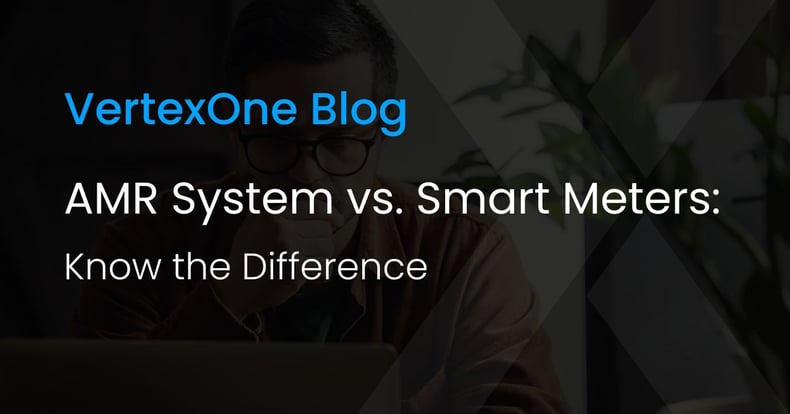
Though they sound similar and offer some of the same features, automatic meter reading (AMR) systems and smart meters are two different things. Although both provide numerous functions to utilities that once had to be carried out manually—such as the ability to measure energy usage without having to physically read a meter—smart meters are more advanced and offer more benefits to utility providers.
Let’s take a look at the features of both smart meters and AMR systems and the benefits they can offer utility providers:
What are AMR systems?
AMR systems are used by water and energy utility providers to collect consumer usage data from meters. AMR systems can record and gather consumption levels and status data remotely from consumers’ meters, resulting in a streamlined billing process. Once gathered, this usage data is transmitted with a device that uses radio frequencies from nearby cellular or radio towers. The information is then received by the water or energy utility’s billing system.
Remote meter reading saves utility providers significant time and resources. Automated meter readings can track consumer usage through truck rolls, meaning a utility worker simply has to drive by the meter’s location without exiting their vehicle.
AMR saves utility providers time carrying out periodic trips to individual meter locations. Like advanced metering infrastructure (AMI), this billing data is based on consumption in real time instead of previous or predicted estimates.
What are the benefits of AMR systems for utilities?
- More accurate usage tracking
- Fewer reworks
- Fewer customer complaints related to billing errors and usage issues, leading to a reduction in incoming calls to customer service agents
- Lower labor costs and less fieldwork
- Quicker service restoration following outages or service issues
- Quicker and more efficient dispatch of repair crews to handle service requests
What are smart meters?
According to the U.S. Department of Energy, AMI (i.e., smart meters) “provides a number of important functions that were not previously possible or had to be performed manually, such as the ability to automatically and remotely measure electricity use, connect and disconnect service, detect tampering, identify and isolate outages, and monitor voltage.”
AMI is somewhat more advanced and more costly than AMR. Unlike AMR systems, which utilize one-way communication from the utility provider to the customer, AMI uses two-way communication to transmit information. Because of this, smart meters can remotely start and stop services at locations, view real-time energy usage, identify power outages as soon as they occur, and provide better reliability.
Advanced metering infrastructure allows utilities to:
- Connect and disconnect services at both businesses and residences.
- Detect meter tampering and incorrect meter readings.
- Pay lower labor costs than AMR systems because manual truck rolls aren’t necessary.
- Dispatch repair crews for service requests, outages, and disruptions promptly and efficiently.
- Monitor usage and generate bills based on actual consumption, not just estimates or previous usage.
- Detect customers’ water leaks or large-scale system leaks remotely.
- Get automated alerts and status updates for the utility, field technicians, and customers.
Because it offers fewer features, AMR may be the ideal solution for utilities that serve smaller communities, whereas AMI may be more beneficial for larger utility providers.
What’s the best CIS and metering system for your utility?
Modern integrations and customer expectations have dramatically altered the role a customer information system (CIS) plays in a utility provider’s daily processes. Learn which CIS and metering features are imperative to modern utilities by downloading our guide, More than a Utility Billing System: How a Customer Information System Can Excel.
